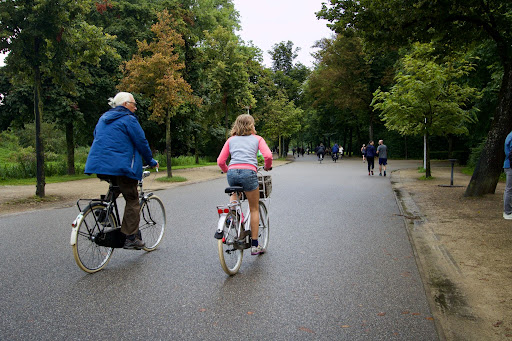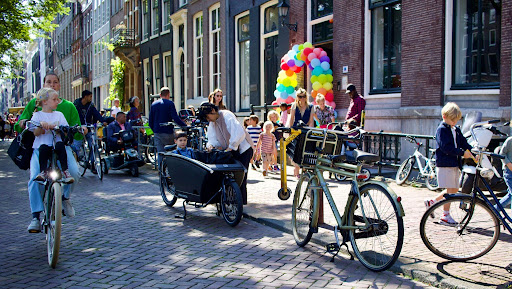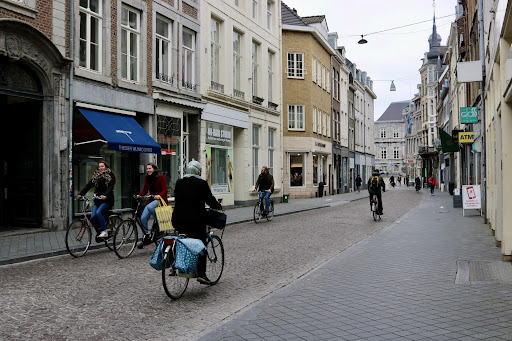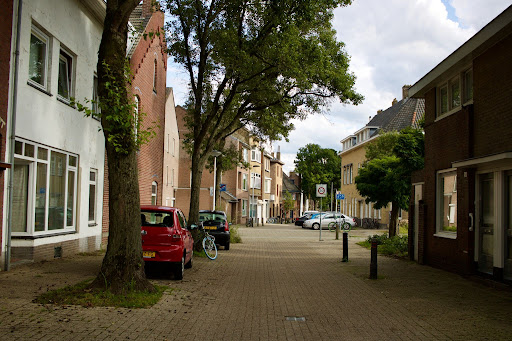FAST 5 – Guest Blog Posts
This is a new series from the Sustainable Transportation team gaining perspectives from various professionals about their experiences in different cities: how they get around and their thoughts surrounding sustainable transportation in general. We want to more closely examine the ways people move around their cities and see how these ideas can be implemented here in Winnipeg, with the hope that these posts might inspire our readers to learn more about how they can get around sustainably. We are excited to connect with more people to keep this conversation going!
If you are interested in getting involved and sharing your experiences with sustainable transportation, please reach out to kris@greenactioncentre.ca
For the first post of this series, we connected with former Green Action Centre staff member – Nicole Roach. Nicole was a member of the Sustainable Transportation team at Green Action Centre from 2018 – 2020, overseeing the Jack Frost Challenge and Commuter Challenge events. She then pursued an M.Sc. in Sustainability Science, Policy, and Society in Maastricht, the Netherlands. Although Nicole lived in the Netherlands throughout the COVID-19 pandemic, she was still able to safely experience and observe the unique Dutch cycling culture. Nicole currently works at Green Communities Canada as the Active Transportation Program Lead, providing support for Ontario Active School Travel and other special projects.
If you’ve heard anything about the Netherlands, chances are you’ve heard of its notorious cycling culture. We wanted to hear from Nicole about her experience in this two-wheeled way of life and how it compares to our transportation culture here in Winnipeg. Here are her thoughts on some of our pressing questions:
I think the big difference you notice is just in the independence, for youth and seniors alike being able to be mobile on their own without being chauffeured around. It provides youth the opportunity to get themselves to and from school, go out with friends, and attend extracurriculars with ease. On many occasions, I saw big groups of kids cycling together or individual kids cycling with an instrument or racket on their bicycles. I also saw many seniors cycling to get their groceries or just out for a cruise – I even saw lots of older gentlemen singing or humming while they cycled – which speaks to the comfort level. The rising popularity of e-bikes have been particularly noticeable with seniors, making hills and far distances that much easier to take on with a bike.
(Image: photo taken by Nicole Roach in Amsterdam, the Netherlands)

Many kids start out riding in the front of a cargo bike, nestled behind the front handlebars, or on the back of a bike, where they get a fun introduction to bikes. When kids get bigger, they move onto strider bikes or tricycles, and they can safely practice on low-traffic streets. The next step is a bicycle, riding close beside their parents, sometimes the parents even hold onto their child to help them up hills or give guidance. So, kids really grow up being immersed in cycling, with it being a fun and normal thing to do. This is further engrained by the cycling skills training that takes place in schools and the design of streets – not just surrounding schools, but everywhere – that invites kids to ride bikes. As such, the only thing that is more challenging for parents is driving their kids to school, with active options like walking, cycling, or wheeling, being much easier.
(Image: photo taken of daycare pick-up by Nicole Roach in Amsterdam, the Netherlands)

Cycling is part of the culture not only in Amsterdam and other large cities, but across the whole country. Even rural areas and small towns have made cycling a part of daily life, through compact design, bike parking, and a complete network. Cycle paths can take you to any small town with ease, with beautiful paths through the Dutch countryside that are ideal for touring, leisure, and transport. It is also important to note that many small communities in the Netherlands are complete, in the sense that everything a person would need on a regular basis is there. They also have good connections with buses and trains which allow simple intercity commuting. The high cycling mode share is characteristic of the Netherlands as a whole, made possible through decades of investments into quality infrastructure and continued improvements.
(Image: photo taken by Nicole Roach in Maastricht, the Netherlands)

Definitely the concept of a “woonerf”, which is a shared residential street with the primary functions of living, playing, walking, cycling, and so on. In these shared streets, the car is a “guest” and they may only go as fast as a “walking pace”, which is 15 km/hour. This concept flips the script, reclaiming the streets for the people who live there, not just their cars. It makes communities more vibrant, safe, and livable for residents of all ages. While it may be a while before Winnipeg adopts the woonerf, the city can take serious steps to reduce residential speed limits, raise crosswalks, and reclaim streets from vehicles to provide public greenspace and other amenities.
(Image: photo of Woonerf taken by Nicole Roach in Maastricht, the Netherlands)

As you can imagine, Winnipeg has a whole lot that it can learn from the Netherlands (as well as other cities and countries around the world). To boil it down to a few points, I would say that Winnipeg could learn about connectivity, comfort, and community.
In terms of connectivity, there is a network of well-maintained sidewalks and safe crosswalks, with many pedestrian-only zones and strategic short cuts through neighbourhoods. Similarly, the cycling infrastructure is just about everywhere, in many cases, giving cyclists multiple route options to get to any desired destination. The routes are intuitive and well-integrated with other modes, such as buses, trams, and trains. Winnipeg can work to ensure walking and cycling routes are connected through a complete network and that multimodal trips are made easier with consistent payment systems (e.g. expanding Peggo for bike parking/storage, bike share, etc.) and better storage.
Regarding comfort, the many low traffic streets were full of children playing, cats roaming, and neighbours chatting with one another – making for a quiet and pleasant atmosphere. The network of low traffic streets makes it comfortable and enjoyable to walk or cycle, without the high-stress that comes from fast moving vehicles. The Dutch infrastructure also ensures that if vehicles are moving at a certain speed, cyclists must be separated, whether that be with a cement divider, garden boxes, parked cars, trees, or other forms of protection. This allows cyclists to ride side by side, going at their own pace, without fear of being honked at, passed too closely, or even being hit. Winnipeg could do a lot more to provide safe and comfortable infrastructure, such as protected bike lanes, raised crosswalks, speed bumps, curb extensions, and much more.
When you have infrastructure that invites people out into the streets, to relax, to walk, to cycle, it fosters community. On many occasions, I saw people waving to each other on their bikes or pulling over to chat. It is much easier to recognize your friends when they are outside of a private vehicle. Many of the neighbourhoods also have shared greenspace, rather than private backyards, providing ample opportunities to meet and get to know your neighbours. The ability to interact with friends and neighbours builds a greater sense of belonging, providing the grounds for community organizing, improved safety, and a shared sense of trust. This can be achieved in Winnipeg if there are efforts to encourage people to get out of their cars and reclaim the streets for play, relaxation, and active movement.
(Image: photo taken by Nicole Roach in Maastricht, the Netherlands)




Recent Comments